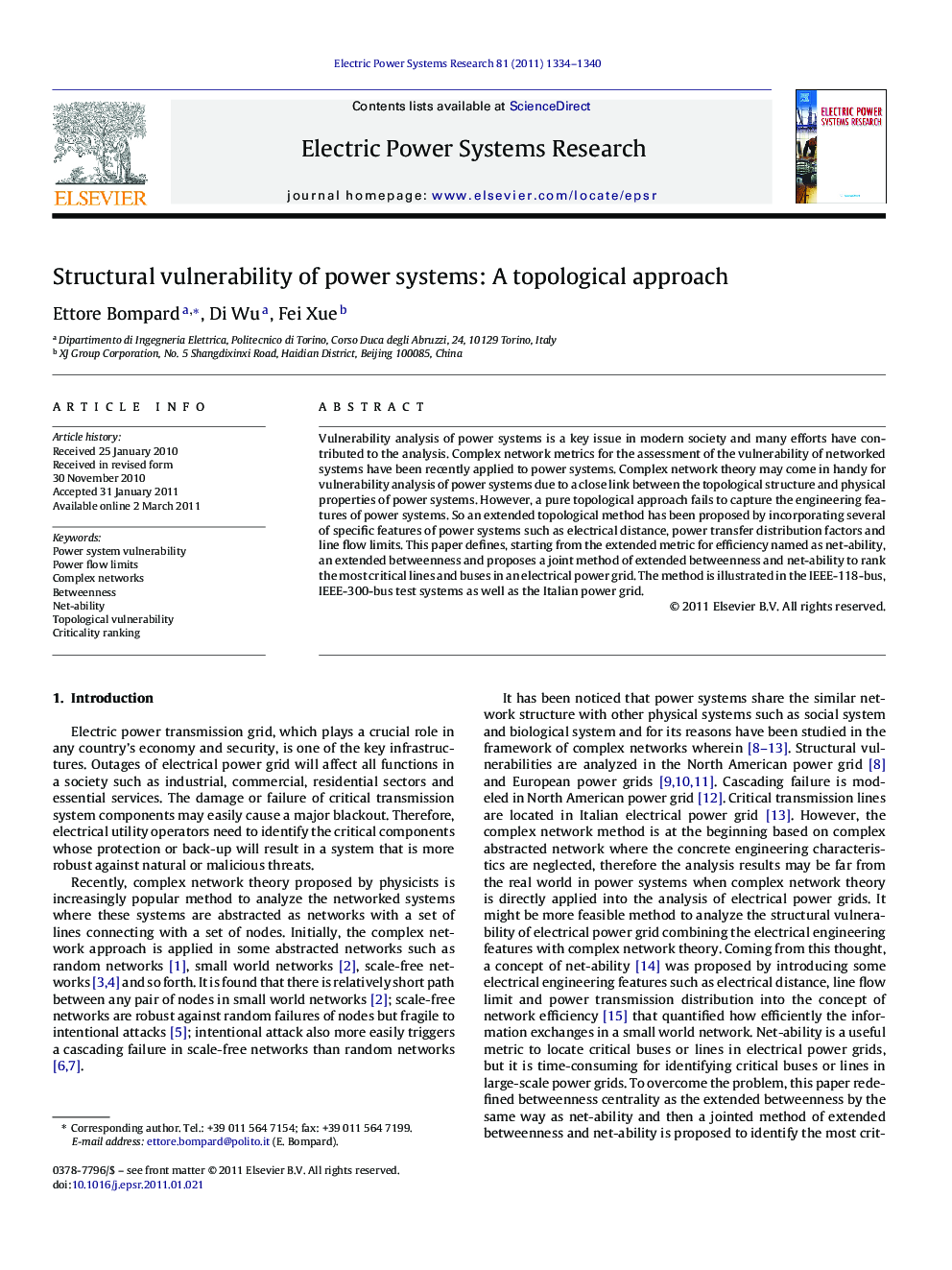| Article ID | Journal | Published Year | Pages | File Type |
|---|---|---|---|---|
| 703987 | Electric Power Systems Research | 2011 | 7 Pages |
Vulnerability analysis of power systems is a key issue in modern society and many efforts have contributed to the analysis. Complex network metrics for the assessment of the vulnerability of networked systems have been recently applied to power systems. Complex network theory may come in handy for vulnerability analysis of power systems due to a close link between the topological structure and physical properties of power systems. However, a pure topological approach fails to capture the engineering features of power systems. So an extended topological method has been proposed by incorporating several of specific features of power systems such as electrical distance, power transfer distribution factors and line flow limits. This paper defines, starting from the extended metric for efficiency named as net-ability, an extended betweenness and proposes a joint method of extended betweenness and net-ability to rank the most critical lines and buses in an electrical power grid. The method is illustrated in the IEEE-118-bus, IEEE-300-bus test systems as well as the Italian power grid.
Research highlights► Structural vulnerability of power systems is analyzed by an extended betweenness. ► The extended betweenness is defined by some electrical engineering specificity. ► The Extended betweenness shows different criticality ranking from pure betweenness. ► There exists close relationship between the extended betweenness and net-ability. ► Critical components can be effectively and efficiently spotted by the relationship.
